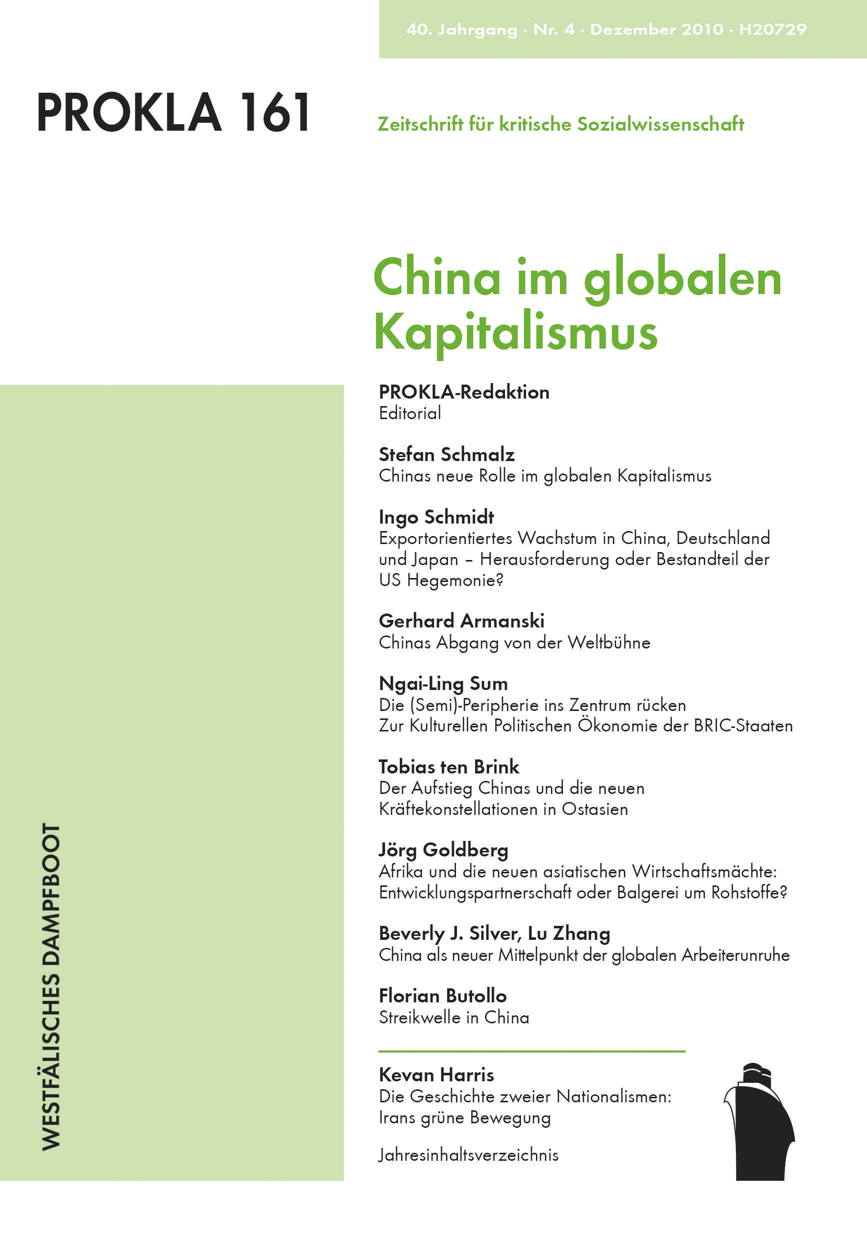Die (Semi-)Peripherie ins Zentrum rücken
Eine Kulturelle Politische Ökonomie der „BRIC“ und der Fall China
DOI:
https://doi.org/10.32387/prokla.v40i161.372Schlagworte:
Politische Ökonomie, BRIC, China, Peripherie, Zentrum, WeltwirtschaftAbstract
A cultural political economy (CPE) approach is adopted to examine the rise of discourses about the BRIC (Brazil, Russia, India and China) economies and about their implications for power shifts in the world system. Forces such as international investment banks, economic strategists, international organizations, national governments, business media, etc. contributed in constructing and circulating ‘BRIC’ as a new economic imaginary and investment form. These involved constructions of ‘hope’ and ‘strength’ over three overlapping stages: an investor story, an investor-consumer story, and now an investorconsumer- lender story. This amalgam of discourses and practices (which are subject to continuing renegotiation in response to changing circumstances and further shifts in the balance of forces) has facilitated the gradual sedimentation and naturalization of BRIC as a potential ‘group’ and has mediated particular power shifts in the global political economy. Specifically, this (trans-)national privileging and popularization of ‘BRIC’ is contributing to the (re-)making of investment patterns and neoliberal social relations.






